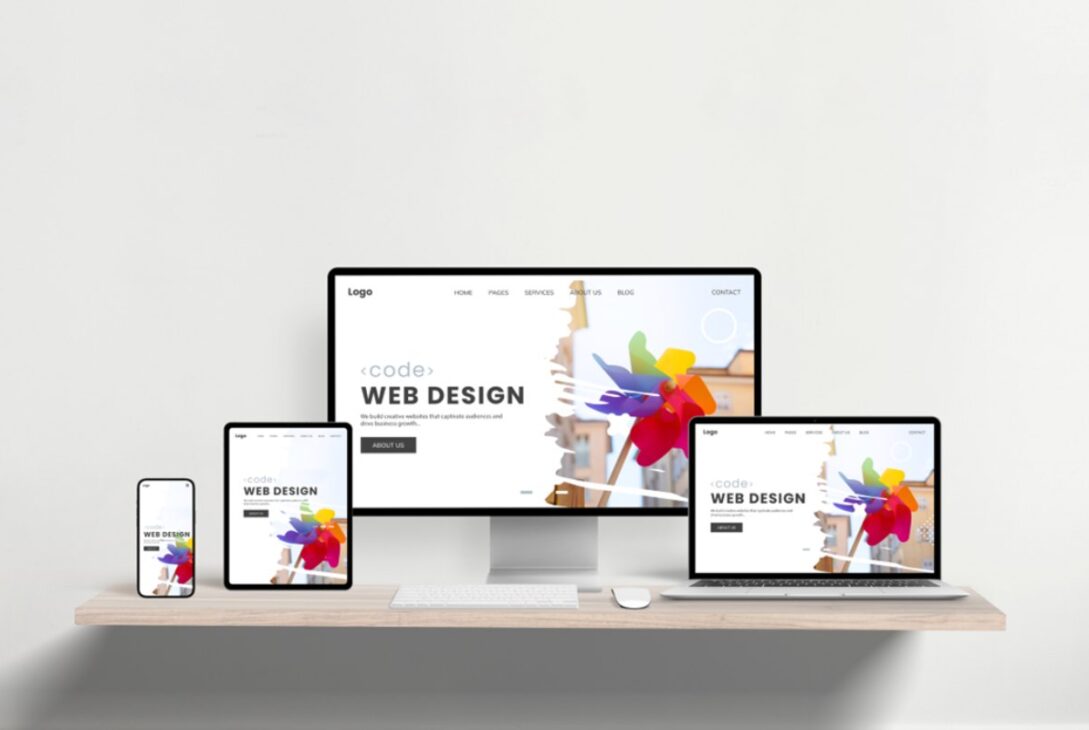Trust is the foundation of every successful business relationship. Whether you run a small online store, a service-based company, or a local shop, customers are far more likely to buy from you if they believe your business is credible, reliable, and professional. But in the digital age, where most people interact with brands for the first time online, that trust is built—or lost—within seconds.
Your website is often the first impression customers have of your brand. A well-designed site doesn’t just look attractive; it silently communicates integrity, stability, and attention to detail. On the other hand, a poorly designed or outdated website can raise red flags that send visitors running to competitors.
Let’s explore how good website design builds customer trust, what specific elements inspire confidence, and how small business owners can create an online experience that turns first-time visitors into loyal clients.
First Impressions Matter More Than Ever
When a visitor lands on your website, they form an opinion almost instantly. Studies show that it takes less than a second for people to decide whether they trust a website enough to stay and explore further. Visual design plays the biggest role in that snap judgment.
A cluttered layout, hard-to-read fonts, or mismatched colors can make your business appear unprofessional. In contrast, a clean, modern, and well-organized design suggests that your company is established and takes its work seriously.
Think of your website as the digital equivalent of your storefront. You wouldn’t greet customers with flickering lights or a messy window display. The same principle applies online—design is your first handshake with potential clients.
Professionalism Begins with Design Consistency
Consistency is one of the most powerful indicators of professionalism. When your website design reflects your brand’s colors, logo, and tone across every page, it tells visitors that you pay attention to detail. Consistency also helps reinforce brand recognition, which in turn builds trust.
For example, if your social media profiles, email signatures, and printed materials all share the same color scheme and design language as your website, you create a cohesive experience that feels reliable and authentic. People trust what feels familiar.
On the other hand, if your homepage uses one style and your contact page another, it can create confusion or even suspicion. Subtle inconsistencies make visitors wonder if your business is legitimate or if your site was hastily thrown together.
Clear Navigation Reduces Friction
Visitors come to your website with a purpose—whether it’s to learn about your services, find your contact information, or make a purchase. If your site is difficult to navigate, they’ll leave in frustration.
Good website design builds trust by making it effortless for users to find what they need. Menus should be simple and logically organized. Buttons and links should be clearly labeled. Your contact information should be easy to locate—preferably on every page.
When customers can quickly find what they’re looking for, they feel confident that your business is capable and well-organized. A confusing or broken navigation structure, on the other hand, can make even the most trustworthy business seem unreliable.
The Power of Visual Credibility
Humans are visual creatures. We process images faster than words, and we instinctively associate high-quality visuals with professionalism. That’s why photography and imagery play such a crucial role in building trust online.
If possible, use original photos that showcase your team, products, or workspace. Real images feel authentic and help customers connect emotionally with your brand. But when original photography isn’t an option, carefully selected stock photos can work beautifully—as long as they’re relevant, high-quality, and align with your brand’s tone.
Avoid clichéd or overly posed images that feel artificial. Instead, choose visuals that look natural and relatable. Whether it’s a smiling employee, a clean workspace, or a satisfied customer, the right imagery helps humanize your business and establish credibility.
The Importance of Mobile-Friendly Design
In today’s world, most people browse the web on their phones. A website that looks great on desktop but falls apart on mobile devices sends the wrong message. Visitors may assume your business is outdated or inattentive to customer needs.
A mobile-first design shows that your business understands and values modern customer behavior. Responsive websites automatically adapt to any screen size, ensuring users have a seamless experience whether they’re on a phone, tablet, or computer.
When your website loads quickly and functions smoothly across devices, visitors subconsciously trust you more. It shows that you care about their time and convenience—key ingredients in any trusting relationship.
Speed and Security Are Silent Trust Builders
Even if your website looks beautiful, it can still lose credibility if it’s slow or insecure. A page that takes more than three seconds to load risks losing a large percentage of visitors. And a site without visible security measures—like HTTPS or SSL certificates—can scare potential buyers away.
Speed matters because it communicates professionalism and technical competence. A fast website signals that your business invests in performance and values efficiency. Security matters because customers need assurance that their personal and payment information is protected.
Adding visible trust indicators like security badges, privacy policies, and SSL encryption can go a long way in making visitors feel safe doing business with you.
Testimonials and Social Proof Seal the Deal
People trust other people more than they trust businesses. That’s why testimonials, reviews, and social proof are essential design elements for building credibility.
A good website design integrates these trust signals naturally into the layout. Featuring customer testimonials, media mentions, or client logos on your homepage immediately reassures visitors that others have had positive experiences with your brand.
Even a small local business can benefit from displaying authentic reviews or “before and after” project photos. These touches prove that you deliver real results and stand by your promises.
Content That Speaks with Authority
Design doesn’t end with visuals—it extends to the way your content is presented. Well-written, helpful, and grammatically correct copy reinforces your professionalism and builds confidence.
Your website should clearly communicate who you are, what you do, and why you’re the right choice. Avoid jargon and fluff; instead, focus on clarity, empathy, and expertise. When visitors feel informed rather than overwhelmed, they’re more likely to trust you.
Blog posts, FAQs, and case studies can also establish authority. By sharing knowledge freely, you position your business as a trusted resource—not just another company selling a product or service.
Transparency Creates Authentic Connections
Good design can help communicate transparency—a powerful trust-builder. Display your contact details prominently. Include an “About Us” page that introduces the real people behind your business. Show your location, your history, and your mission.
Authentic, human-centered design helps customers feel like they’re dealing with real people, not a faceless corporation. That emotional connection encourages long-term loyalty.
Even small touches like a professional headshot, a friendly welcome message, or a personal note from the founder can make your website feel genuine and approachable.
Accessibility and Inclusivity Matter
A trustworthy brand is one that welcomes everyone. Accessibility isn’t just a legal or technical consideration—it’s a moral and reputational one.
Design your website so that people with disabilities can navigate and interact with it easily. Use proper color contrast, add alt text to images, and make sure buttons and links are labeled clearly. An inclusive website reflects care, responsibility, and respect for all users—qualities that inspire trust and goodwill.
Avoid Common Design Pitfalls That Undermine Trust
Even small design mistakes can erode credibility. Watch out for:
- Outdated designs or broken links that make your site look neglected.
- Walls of text that overwhelm readers.
- Autoplaying videos or pop-ups that frustrate visitors.
- Inconsistent branding between pages.
- Overuse of low-quality visuals or mismatched colors.
Each of these signals subconsciously tells users that your business may not be trustworthy or professional.
Updating and Maintaining Your Site
Trust isn’t built once—it’s maintained over time. Regular updates keep your website relevant, functional, and secure. Fresh blog posts, recent testimonials, and up-to-date contact information signal that your business is active and engaged.
Conversely, a neglected site—featuring outdated promotions or broken pages—can make visitors question whether you’re still in business. Make it a habit to review your website monthly and address any issues promptly.
Final Thoughts
Good website design is about far more than aesthetics—it’s about psychology, communication, and reliability. When done right, design builds trust before a single word is spoken or a product is sold. It reassures customers that your business is legitimate, professional, and worthy of their time and money.
For small business owners, this trust can be the difference between a one-time visitor and a lifelong customer. By combining consistent branding, high-quality visuals, mobile-friendly functionality, and authentic content, you create an online space that feels safe, credible, and welcoming.
And remember, you don’t need a massive budget to achieve this. With thoughtful planning, attention to detail, and even a few well-chosen stock photos, your website can project the professionalism and confidence that modern customers expect.
Because in today’s digital marketplace, trust isn’t just earned through what you say—it’s built through what visitors see, feel, and experience the moment they land on your website.
Also Read: Elevate Your Local Business Visibility with BrandLume’s



